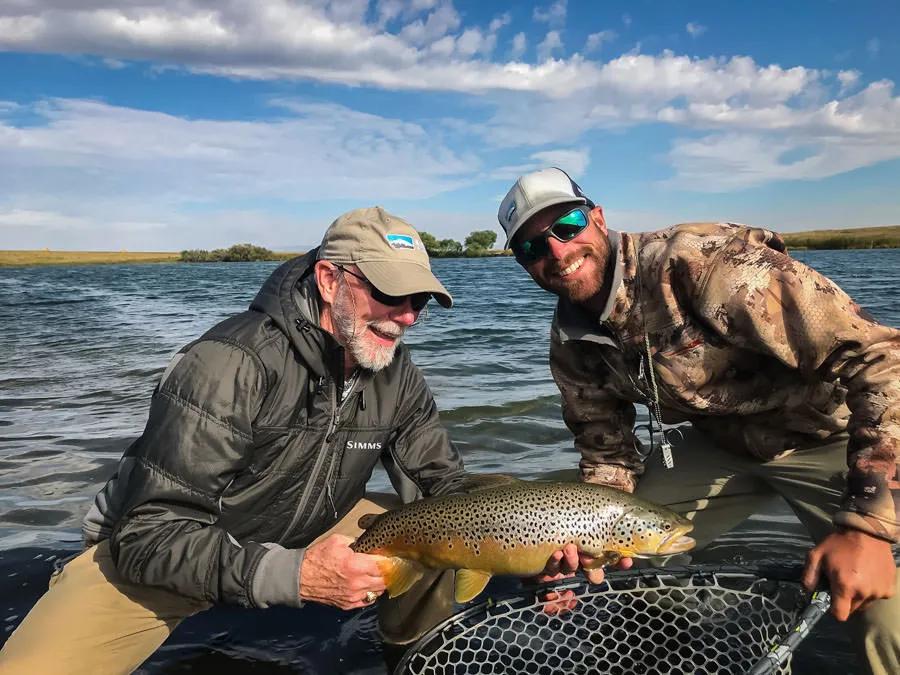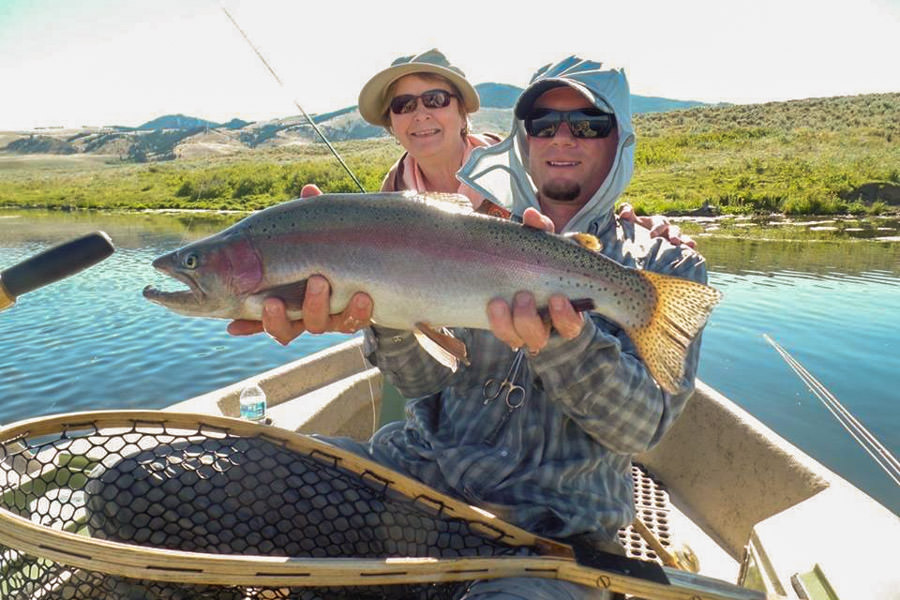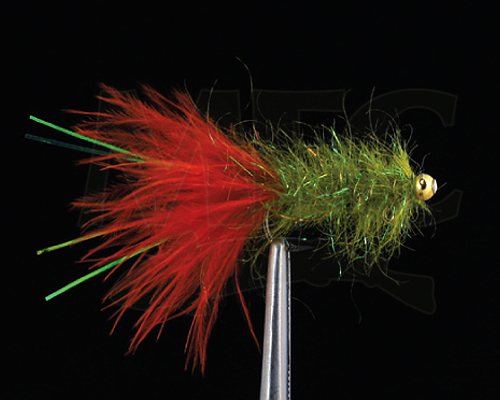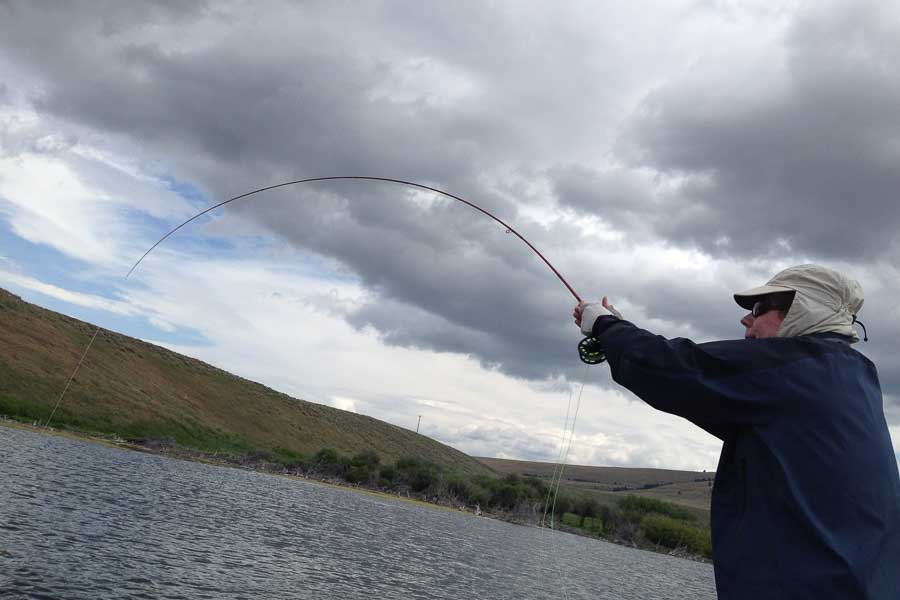
Stillwater Indicator Fishing Basics
At Montana Angler we’ve got a wide variety of stillwater fishing options that add a fun and different option for our guided fly fishing trips. Stillwaters can actually produce some of the largest fish a fly fisherman may catch in Montana. We often target smaller lakes on large ranches that we have gain permission to fish with our guests that offer eager, large trout that receive little pressure. A few of these lakes serve as irrigation retention for large ranches and others are more naturally occurring. Lake fishing offers totally different challenges than fishing in moving waters. The surface of a river shows defined holding water and feeding lanes, no matter how subtle they may be. The surface of a lake on the other hand is a fairly featureless venue to the observer. The trout that inhabit a lake will cruise at varying depths and will inhabit certain more promising areas of a lake whereas other areas and depths may be less favorable. Understanding the basics of stillwater indicator fishing can help the lake angler find these locations and depths, and ultimately find more fish.

A big advantage to learning the basics of indicator fishing in stillwaters is that it enables the angler to probe the depths and narrow in on where a lake’s fish are feeding at and what they are eating. This static lake fishing technique is also a fun way to pass the time and have flies in the water when there are no fish visibly rising and no fish actively chasing stripped flies like streamers, leeches, and damselfly nymphs.
A slightly longer 6 weight is the ideal stillwater indicator fishing rod. 9’6” or 10’ rods are popular as they give the angler a bit of an advantage when lifting and roll casting the long stillwater nymph rigs. Longer bellied, indicator fishing specific lines like the Rio Intouch Indicator and Scientific Anglers Mastery Anadro are also the most ideal choice for a dedicated stillwater nymphing rod. These lines, with their longer head lengths, excel at lifting and turning over longer indicator rigs.

Although the standard thingamabobber style indicator that we use for fishing in rivers is adequate for lake fishing, there is a special stillwater fishing indicator that actually does excel while “nymphing” in a lake. The slip float or “tapered slip indicator” works extremely well for fishing with a longer leader as the bobber “pops” and releases from wherever the angler has set the depth. This is especially helpful when a fish is hooked on a long leader and may be 10+ feet below the bobber. Having an indicator that slides down the leader and out of the way during the fight makes it easier to maneuver a fish within range of a net at the end of the fight. -Otherwise it can be very difficult trying to land a fish that’s more than 10 feet from the rod tip, with a 9’ rod.

There are many variations on this technique however the basic setup is similar to indicator fishing in a river. The float goes up near the top of the leader and is adjusted to the desirable fishing depth. One small difference is that a small swivel is typically used at the bottom of the leader, this swivel is crucial for not losing the little black peg that holds the float in place when fishing. Then multiple flies are tied inline off of the bottom of the swivel. Depending on local regulations 2-3 fly rigs are the most common. Here in Montana we are limited to two flies on the line, so keep that in mind. Typically the heaviest fly in the series or 2-3 will be put on the bottom, and the others will go above. This way, the flies will hang fairly vertically under the float, thus making for a more sensitive indicator, showing even the most subtle of strikes. A specially designed fly for this purpose is Phil Rowley’s balanced leech pattern. The fly acts as an excellent point fly for stillwater nymphing as it is tied on a jig hook and has an offset beadhead that allows the leech to suspend in the water and remain oriented horizontally, more similarly to how a natural leech would swim.
 Epoxy Scud |  Phil Rowley's Balanced Leech |  Tim's Chromie |
The most common flies for this static style of fishing include chronomids, leeches, and scuds. Stillwater trout can get a very thorough look at your flies as they’re steadily suspended in the water versus trout in a river that only get a split second to decide whether or not to eat a fly. Things can occasionally get very tough when it comes to exactly matching flies for stillwater fishing if the fish aren’t aggressively feeding. Size, color, profile, and many other factors can be a consideration with stillwater fly fishing. More generic nymphs like pheasant tails, copper johns, and prince nymphs can also work well, especially on less technical fisheries like some of our private lakes.

Admittedly, stillwater indicator techniques don't sound all that exciting to the angler that hasn’t tried nymphing a lake. However with a little guidance, stillwater indicator fishing can prove to be yet another technique to make you a more well-rounded angler and more effective at catching fish in more situations. Our guides are experts at teaching our anglers and lake fishing is no exception, let us take you to one of our private lake fisheries to hone your lake fishing skills!

